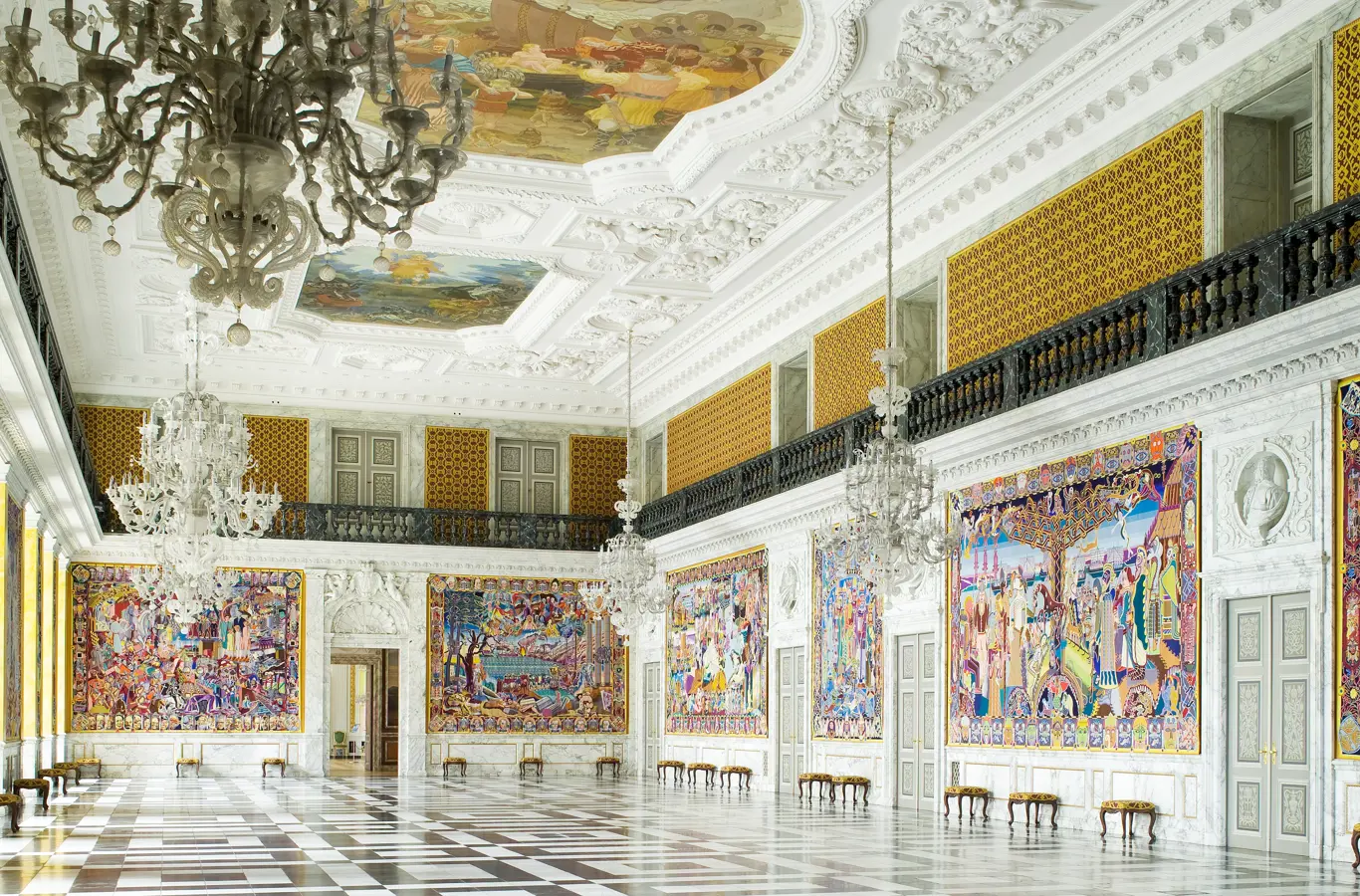
In the Great Hall at Christiansborg Palace hang 17 quite modern tapestries, which shows Denmark’s history.
Large tapestries, often called "gobelins", were common in earlier times, when they were used as decorative and insulating wall decorations in wealthy homes. Tapestries with historical and mythological scenes are kept in the royal palaces, among others, in the Great Hall at Rosenborg Palace and in Christian VII’s Palace at Amalienborg.
In the Great Hall at Christiansborg are 17 quite modern tapestries, one of the greatest depictions of Denmark’s history ever made.
The tapestry series was commissioned for HM Queen Margrethe’s 50th birthday in 1990 as a gift from Danish businesses and foundations. The tapestries were made by the tradition-rich French weaving factory, Manufacture des Gobelins, which has lent its name to the concept of "gobelin", and another French factory, Manufacture de Beauvais, after drawings by the artist, Bjørn Nørgaard.

In the 17 tapestries, Nørgaard tells the history of Denmark and the world over the past 1000 years.
The periods called The Viking Age, The early and late Middle Ages, The Reformation, The Aristocracy, The early and late absolute Monarchy, The late 1800s, The Second World War, The Present and The Future are conveyed in each of his tapestries. In modern, colourful imagery, scenes of historical events as well as kings and queens with period-typical artefacts, symbols and ornaments are interwoven. In the wide edges of the tapestries, the so-called bordure, one can recognise the faces of prominent personalities from the various periods, and in several of the tapestries one discovers "time holes", where contemporary motifs suddenly break into the historical narratives.
Members of the Royal Family are obviously woven into the large tapestry narrative. Queen Margrethe and Prince Henrik appear in full figure surrounded by their dachshunds on a tapestry called "The Present", while the two princes are seen on a tapestry called "The Future"; the then-crown prince and heir to the throne is depicted in Dannebrog-coloured red and white, while HRH Prince Joachim’s green colour symbolises his status as cultivator of Schackenborg Palace’s farmland.
Bjørn Nørgaard’s tapestries
The slow weaving process, which involved 30 weavers working full-time for ten years, meant that it was not until Queen Margrethe’s 60th birthday in 2000 that the tapestries were put into place in the newly-restored Great Hall at Christiansborg Palace. At the unveiling ceremony of the tapestries, Queen Margrethe transferred ownership of them to the Danish state with the desire that they should belong to the Danish nation.
The Royal Reception Rooms
The Great Hall at Christiansborg Palace is decorated with the colourful tapestries made by Bjørn Nørgaard. It is possible to visit the palace on a guided tour.